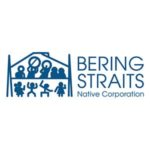Entities Operating in the Twelve Regions
To understand the complex landscape of Alaska Native representation, it is important to learn the differences between Alaska Native corporations, Alaska Native regional non-profit organizations, and tribes.
Tribes located in Alaska do not have a land base (e.g. reservations). Through ANCSA, Alaska Native corporations hold title to roughly 44 million acres of land held in private corporate ownership. Because land ownership and the governmental relationship are held by two different and distinct entities that represent Alaska Native people, the differences in Alaska are magnified when compared to Lower 48 tribes.
Alaska Native Regional Corporations
Number currently operating in Alaska: 12
The Alaska Native Claims Settlement Act of 1971 extinguished aboriginal land title and mandated the creation of private, for-profit corporations owned by Alaska Native shareholders. Alaska Native regional corporations are owned by over 140,000 Alaska Native shareholders and hold title to nearly 27 million acres of land across Alaska. Alaska Native regional corporations manage the land for the benefit of their shareholders.
For more information about Alaska Native regional corporations:
ARA About ANCSA
Alaska Native Regional Non-profit Organizations
Number in Alaska: 12
Alaska Native regional non-profit organizations were created to provide social services and health care for Alaska Native peoples. The specific objectives of the organizations vary but generally focus on health, cultural, and educational opportunities. Through federal compacts, grant funding, support from the regional corporations, collaboration with village non-profit organizations, and other means, the regional non-profits deliver a range of services. Programs include physical and behavioral health care, scholarships for Alaska Native students, sponsorship of cultural events, Alaska Native language preservation efforts, protection of sites with historic or religious importance, and more.
For a complete list of the Alaska Native Regional Nonprofit Organizations:
State of Alaska Department of Commerce
Communities, Cities, and Boroughs
Communities
Number in Alaska: over 160, including 114 city governments
The State of Alaska has three classes of city governments: home rule, first class, and second class. The classification of a city government determines what governance structure must be followed within its boundaries. There are 114 organized city governments in Alaska ranging in population size from less than 100 to more than 270,000.
Boroughs
Number in Alaska: 18
The State of Alaska has five classes of borough governments. Whether the borough is organized or unorganized and its classification determines what type of governance structure must be followed within its boundaries.
For more information about Alaska communities and boroughs:
Alaska Community Database Online
Alaska Native Village Corporations
Number currently operating in Alaska: 176
The Alaska Native Claims Settlement Act of 1971 extinguished aboriginal land title and mandated the creation of private, for-profit corporations owned by Alaska Native shareholders. Alaska Native village corporations are owned by Alaska Native shareholders and hold title to nearly 17 million acres of land across Alaska. Alaska Native village corporations manage the land for the benefit of their shareholders.
For more information about Alaska Native village corporations:
Alaska Native Village Corporation Association
Federally Recognized Tribes
Number in Alaska: 229
Federally recognized tribes possess certain inherent rights of self-government (i.e., tribal sovereignty). The designation comes with specific responsibilities, powers, limitations, and obligations. Most federally recognized tribes in the lower 48 are able to exercise their powers within a land base (e.g. reservations). Alaska federally recognized tribes are unique because
For more information about federally recognized tribes:
The Bureau of Indian Affairs Tribal Leader Directory
Federal Indian Reservations
Number in Alaska: 1
A federal Indian reservation is an area of land reserved for a tribe under
For more information about federal Indian reservations:
Bureau of Indian Affairs
Prominent Alaska Native Cultures
Number in Alaska: 11
Alaska Natives belong to many diverse cultures, including Inupiaq, St. Lawrence Island Yupik, Athabascan, Yupik, Cupik, Sugpiaq, Eyak, Tlingit, Haida, Tsimshian, Unangax. Within the eleven distinct cultures, there are various subcultures with differences in dialect, cultural activities, and traditional ways of life. Among the eleven major cultures, over 20 different languages are spoken.
For more information about Alaska Native cultures:
Smithsonian Alaska Native Collections











